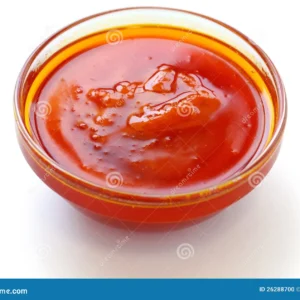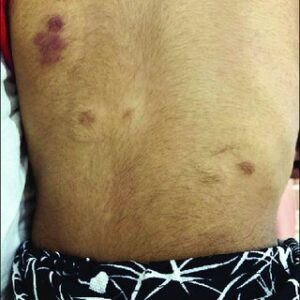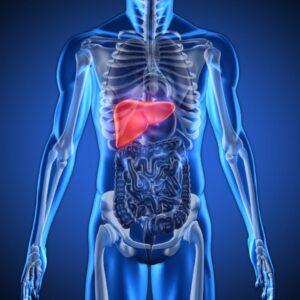A stroke is a medical emergency requiring prompt treatment to minimize brain damage. After the initial crisis, natural remedies, proper nutrition, and tailored exercises can play a significant role in the recovery process. Here’s an in-depth look at how diet and exercise can aid stroke recovery and help prevent future occurrences.
Recovering from a stroke and preventing future incidents involves a comprehensive approach that combines medical treatment, lifestyle changes, dietary adjustments, and regular physical activity. Here’s an in-depth guide on what to do to support stroke recovery and prevent recurrence:
Medical Follow-Up and Medication Adherence
- Regular Check-Ups: Keep regular appointments with your healthcare provider to monitor progress and adjust treatment plans as needed.
- Medication Compliance: Take prescribed medications as directed. These may include anticoagulants, blood pressure medications, cholesterol-lowering drugs, and antiplatelet agents.
- Rehabilitation Therapy: Engage in physical therapy, occupational therapy, and speech therapy as recommended to regain lost functions and improve overall recovery.
Dietary Adjustments
- Adopt a Heart-Healthy Diet: Follow a diet rich in fruits, vegetables, whole grains, lean proteins, and healthy fats. The Mediterranean diet is particularly beneficial.
- Reduce Sodium Intake: Limit salt to help manage blood pressure. Opt for herbs and spices to flavor your food instead of salt.
- Limit Saturated Fats and Trans Fats: Reduce consumption of red meat, processed foods, and high-fat dairy products. Choose healthy fats from sources like avocados, nuts, seeds, and olive oil.
- Increase Fiber Intake: Foods high in fiber, such as whole grains, fruits, vegetables, and legumes, can help control cholesterol levels and maintain a healthy weight.
- Stay Hydrated: Drink plenty of water throughout the day. Avoid sugary beverages and limit alcohol consumption.
Physical Activity
- Regular Exercise: Engage in at least 150 minutes of moderate aerobic activity or 75 minutes of vigorous activity per week, as recommended by the American Heart Association.
- Strength Training: Perform strength-training exercises at least twice a week to build muscle strength and support cardiovascular health.
- Balance and Flexibility Exercises: Incorporate exercises like yoga, Tai Chi, or simple stretching routines to improve balance, flexibility, and prevent falls.
- Functional Exercises: Focus on activities that mimic daily tasks to improve coordination and functional independence.
Lifestyle Changes
- Quit Smoking: Seek support to quit smoking, as it significantly reduces the risk of stroke by improving vascular health.
- Limit Alcohol Consumption: Stick to recommended guidelines (up to one drink per day for women and up to two drinks per day for men) to avoid increasing blood pressure and stroke risk.
- Manage Stress: Practice relaxation techniques such as deep breathing, meditation, mindfulness, or yoga to reduce stress levels.
- Maintain a Healthy Weight: Achieve and maintain a healthy weight through a balanced diet and regular exercise to reduce strain on the cardiovascular system.
Mental and Emotional Health
- Seek Support: Join stroke support groups or engage in therapy to address emotional challenges and reduce feelings of isolation.
- Stay Connected: Maintain social connections with family and friends to foster a supportive environment for recovery.
- Set Realistic Goals: Break down recovery into manageable goals to stay motivated and track progress.
Monitor Health Metrics
- Blood Pressure: Regularly monitor blood pressure and work with your healthcare provider to keep it within a healthy range.
- Cholesterol Levels: Get regular cholesterol checks and manage levels through diet, exercise, and medication if necessary.
- Blood Sugar Levels: If you have diabetes, keep blood sugar levels under control with proper diet, medication, and monitoring.
Early Warning Signs
- Recognize Symptoms: Be aware of the signs of a stroke (sudden numbness or weakness, confusion, trouble speaking, dizziness, severe headache) and seek immediate medical attention if they occur.
- Act FAST: Use the FAST acronym to identify stroke symptoms:
- Face drooping
- Arm weakness
- Speech difficulty
- Time to call emergency services
Natural Stroke Recovery: Nutrition and Exercise
The right diet can enhance recovery, support brain health, and reduce the risk of subsequent strokes. Here are detailed dietary guidelines:
Leafy Greens and Vegetables:
- Spinach, Kale, and Broccoli: High in antioxidants like vitamin C and E, which combat oxidative stress in the brain. These vegetables are also rich in folate, which is linked to improved brain function.
- Carrots and Bell Peppers: These are loaded with beta-carotene and vitamin C, which are essential for repairing tissues and enhancing immune function.
Fruits:
- Berries (Blueberries, Strawberries, Blackberries): Contain high levels of antioxidants, particularly flavonoids, which have been shown to improve cognitive function and reduce brain inflammation.
- Citrus Fruits (Oranges, Grapefruits): Rich in vitamin C, they help in reducing inflammation and promoting overall vascular health.
Whole Grains:
- Oats, Brown Rice, Quinoa: These are excellent sources of fiber, which helps in managing blood pressure and cholesterol levels, key factors in stroke prevention.
Healthy Fats:
- Avocado, Nuts (Walnuts, Almonds), Seeds (Flaxseeds, Chia Seeds): These foods provide essential omega-3 fatty acids that support brain health and reduce inflammation. Omega-3s have been linked to improved neural communication and protection against further brain damage.
- Olive Oil: A staple of the Mediterranean diet, olive oil is rich in monounsaturated fats, which support heart health and cognitive function.
Lean Proteins:
- Fish (Salmon, Mackerel, Sardines): Fatty fish are high in omega-3 fatty acids, which can help reduce blood clotting and inflammation, crucial for stroke recovery.
- Legumes (Beans, Lentils, Chickpeas): They are excellent plant-based protein sources that provide essential nutrients without the saturated fats found in animal proteins.
Herbs and Spices:
- Turmeric: Contains curcumin, a compound with powerful anti-inflammatory and antioxidant properties that can support brain health.
- Ginger and Garlic: These have natural anti-inflammatory effects and can improve circulation, aiding overall recovery.
Hydration:
- Water: Staying well-hydrated is crucial for maintaining optimal brain function and overall health.
- Herbal Teas: Green tea is particularly beneficial due to its high antioxidant content, which can protect against brain cell damage.
Exercises to Promote Stroke Recovery
Physical activity is essential for recovering mobility, strength, and cognitive function after a stroke. Here are some effective exercises:
Range-of-Motion Exercises:
- Passive and Active Range-of-Motion Exercises: These exercises help maintain joint flexibility and prevent stiffness. They involve moving the affected limbs through their full range of motion, either independently or with assistance.
Strength Training:
- Resistance Bands and Light Weights: Strength training with these tools can enhance muscle strength and endurance in the affected limbs, improving functional mobility.
- Bodyweight Exercises (Sit-to-Stand, Leg Lifts): These exercises can strengthen the lower body, enhancing stability and independence.
Balance and Coordination Exercises:
- Standing on One Foot: Start with holding onto a stable surface and gradually progress to balancing independently, which improves stability and reduces the risk of falls.
- Heel-to-Toe Walk: This exercise enhances coordination and gait by simulating natural walking movements.
Aerobic Exercises:
- Walking: A low-impact exercise that improves cardiovascular health and promotes circulation. Start with short distances and gradually increase as strength and endurance improve.
- Stationary Cycling: This is an excellent option for low-impact aerobic exercise, enhancing cardiovascular health without putting undue stress on joints.
Flexibility Exercises:
- Stretching: Regular stretching helps maintain flexibility, reduce muscle tightness, and improve overall mobility.
- Yoga: Practicing yoga can improve flexibility, balance, and mental relaxation, aiding both physical and emotional recovery.
Functional Exercises:
- Task-Oriented Exercises: These exercises mimic daily activities, such as reaching for objects or using utensils, helping to regain functional independence.
- Mirror Therapy: Involves using a mirror to reflect the movements of the unaffected limb, creating the illusion that the affected limb is moving, which can help in regaining movement. Lifestyle Modifications for Stroke Prevention and Recovery
Beyond diet and exercise, several lifestyle changes can significantly impact stroke recovery and prevention:
- Quit Smoking: Smoking damages blood vessels and significantly increases the risk of stroke. Quitting smoking can improve cardiovascular health and reduce stroke risk.
- Limit Alcohol Intake: Excessive alcohol consumption can lead to high blood pressure and increase stroke risk. Moderation is key.
- Manage Stress: Chronic stress can negatively impact cardiovascular health. Techniques such as mindfulness, meditation, and deep-breathing exercises can help manage stress effectively.
- Regular Medical Check-ups: Monitoring blood pressure, cholesterol, and blood sugar levels is crucial for preventing future strokes and managing overall health.
Conclusion
Recovering from a stroke involves a combination of medical treatment, dietary adjustments, regular exercise, and lifestyle changes. By incorporating these natural methods into your recovery plan, you can enhance physical and mental well-being, support brain health, and reduce the likelihood of future strokes.
Always consult healthcare professionals before starting any new diet or exercise regimen to ensure it is safe and appropriate for your specific condition. With commitment and the right approach, significant recovery and improved quality of life are achievable.







